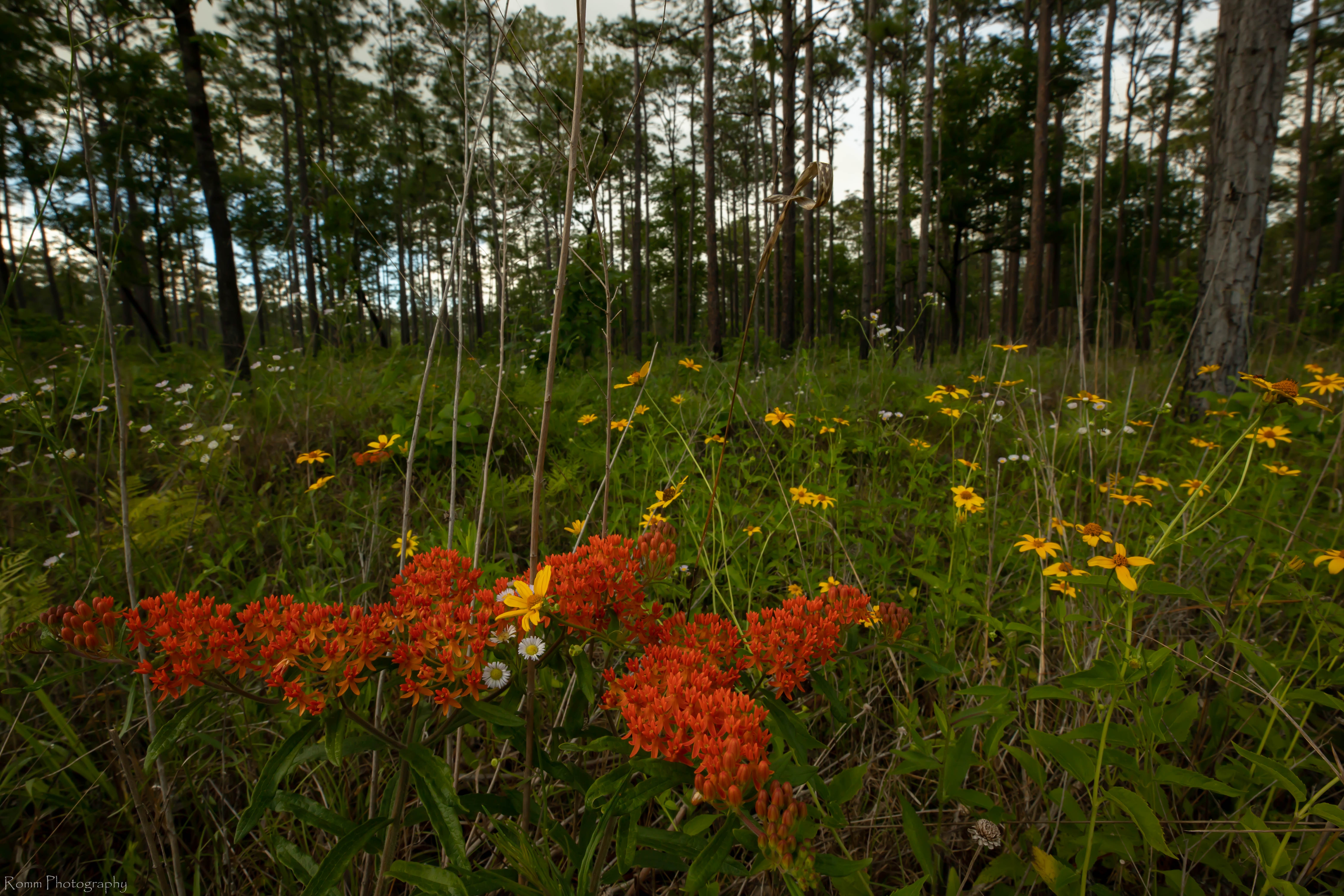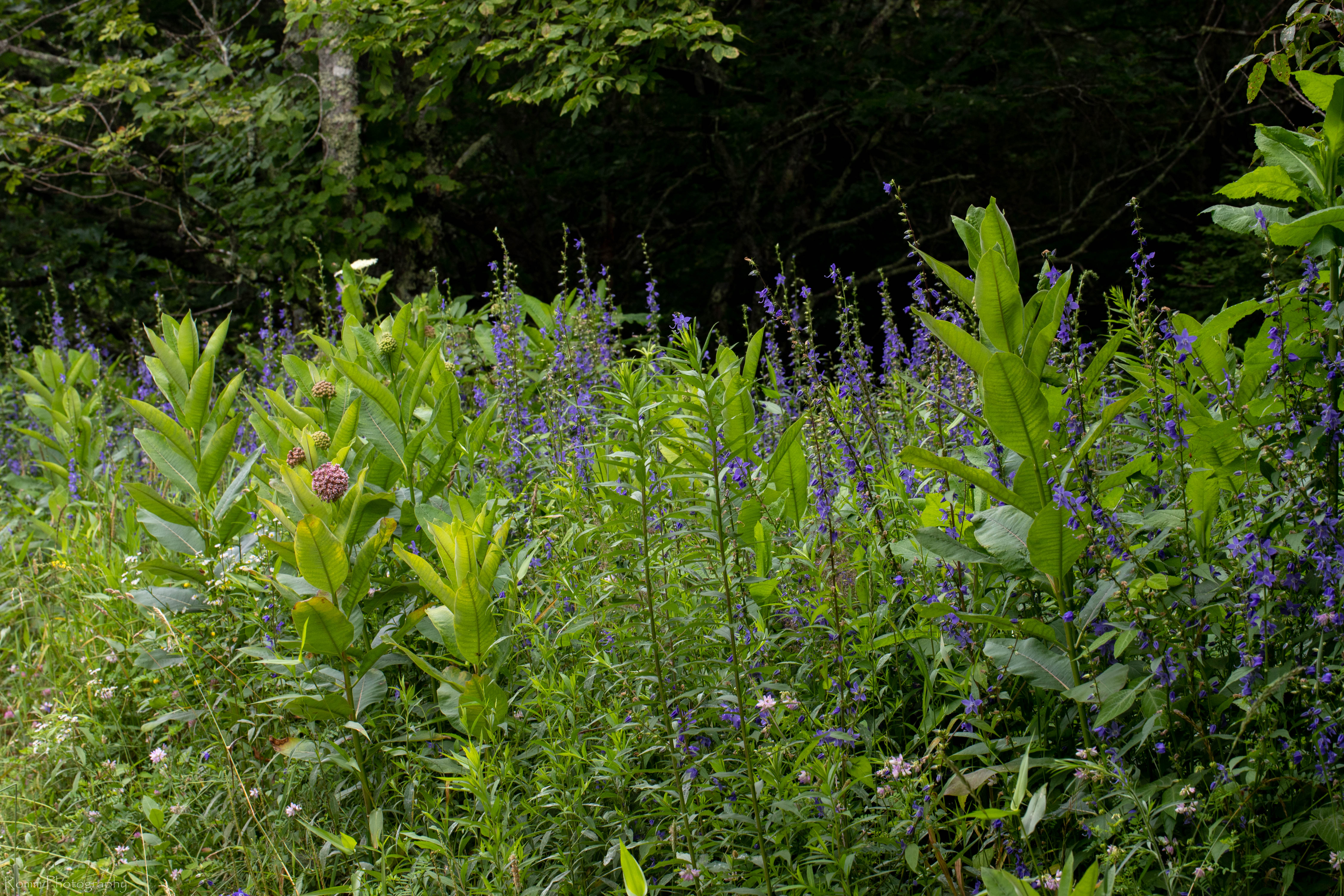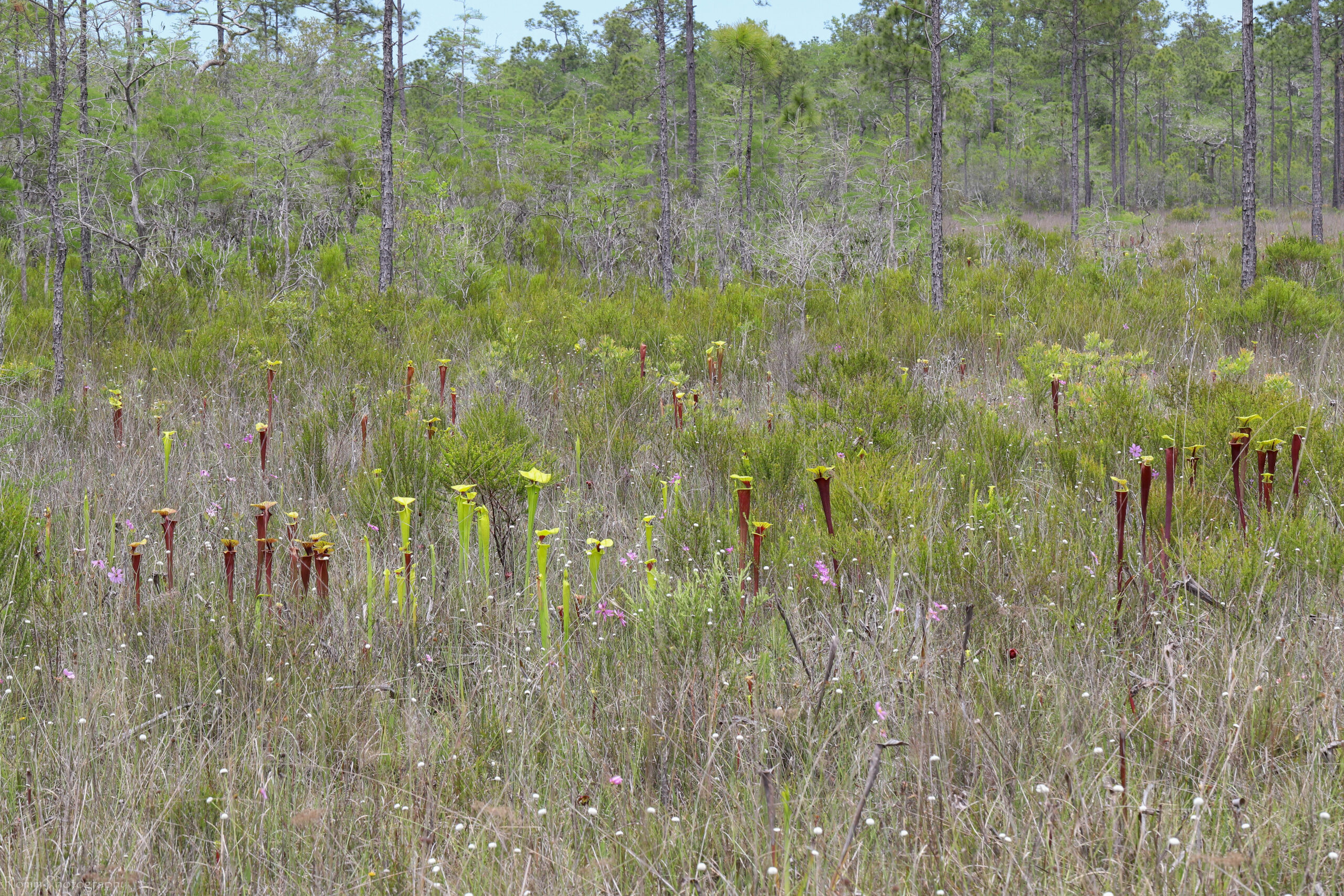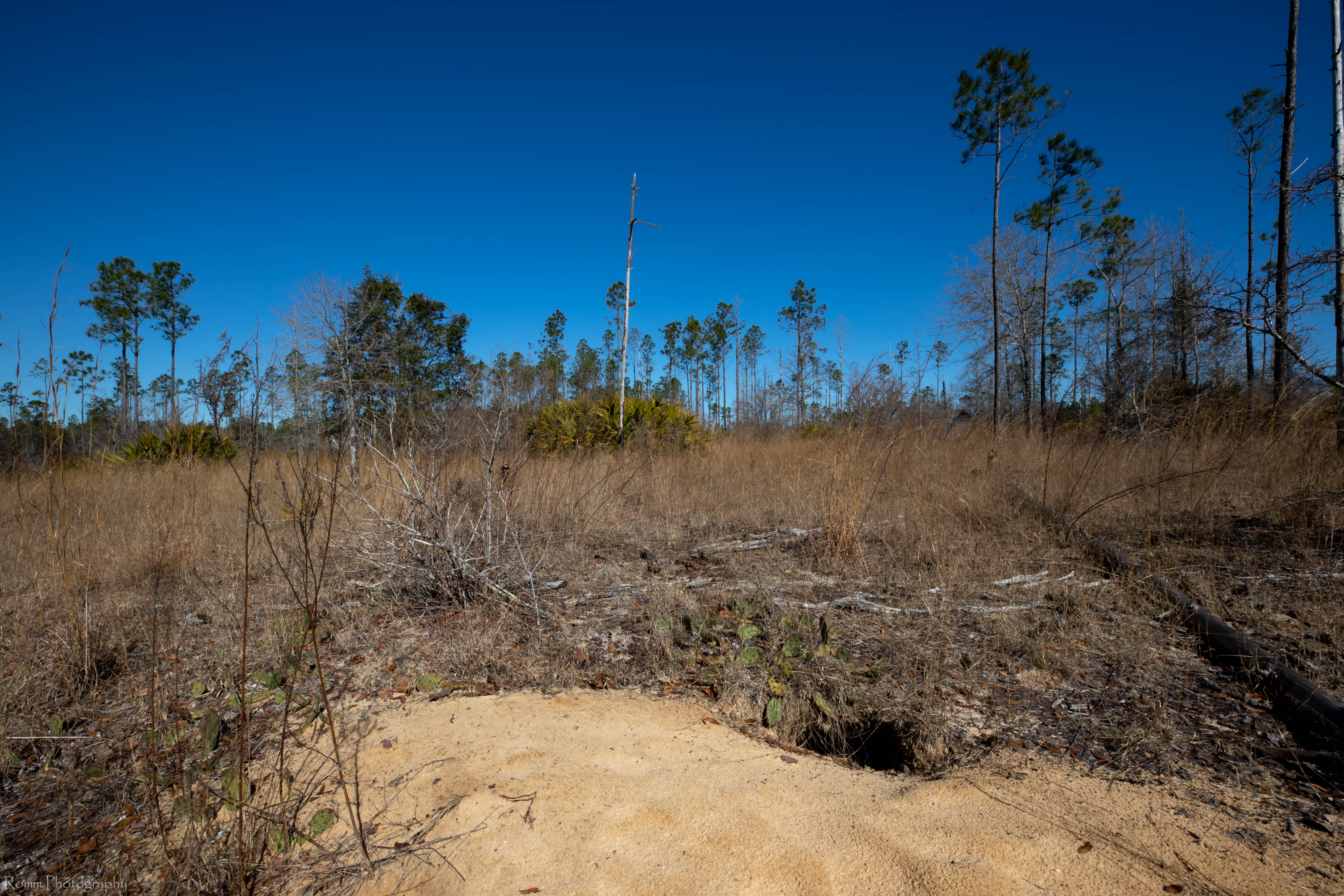
Gardening and landscaping with native plants is usually to benefit wildlife – to create wildlife habitat. But what is wildlife habitat? The simple answer is that it depends. Suitable habitat depends on the species you are managing for, and how you manage depends on site conditions, available space, existing plant communities, and applicable disturbance techniques.
In our first post, we talked about understanding plant communities based on your physiographic region. Today, we are going to discuss how managing for different plant communities can improve wildlife habitat. We are going to dive into some pretty broad concepts, but will circle back to smaller residential landscapes and home gardens.
Wildlife habitat can be defined as food, water and shelter, arranged in such a way that allows for the survival and reproduction of a certain wildlife species through all life stages. These components are easy enough to understand at the surface, but can get very complicated.
Water, Food, and Shelter
Let’s start with water. Water is water, right? But what if you’re talking about an amphibian that requires a unique type of wetland to reproduce? Many wildlife species have needs that are met by specific hydrologic conditions. Large rivers, small streams, seasonal wetlands, oxbow lakes, seeps, and even individual features within a system can function as habitat for different species.

For now, let’s keep things simple. Many landowners are not going to have suitable aquatic systems for every amphibian. So, for the sake of this discussion, we will contradict ourselves and say that water is, indeed, water. On a residential property, a small water feature will likely meet the water requirements of your target species.
Let’s talk about the other two core components of wildlife habitat – food and shelter. These will be the primary focus of the rest of this discussion. Food and shelter are what most land managers are able to control. Food and shelter are, quite simply, the plants. The plants are what dictates an animal’s ability to live on a landscape.

Wildlife Habitat Management – A Macro View
In order to better understand how plant communities can be manipulated for wildlife, let’s take a more macro-view of habitat management. Wildlife habitat management, historically, has focused on game species such as deer, turkey, and quail. Management for these species varies, as each requires different food and shelter compositions – different plant communities.
The first factor to consider is available space. To support game species, large spaces (oftentimes many thousands of acres) are needed for a sustainable population. Alternatively, a smaller property within a larger mosaic of suitable habitat can help support far-ranging wildlife species.
Space is something of a baseline. The second, and more important, factor is the food and shelter provided by the plant community. More specifically, the structure and composition of the plant community must provide adequate food and shelter for all life stages. We won’t get into the nitty-gritty of what every species needs. What is important to understand is how you attain a desired plant community. How would you, for example, take a closed-canopy forest and encourage herbaceous plants? How would you maintain that landscape once you get there? We are talking about the most important word in wildlife habitat management: disturbance.
Disturbance and Succession
To understand disturbance, we need to define succession. Succession can be understood by thinking about what happens after a forest is clear-cut (or otherwise destroyed). Succession is the transition from herbaceous plants, to longer-lived perennials and woody shrubs, to a closed-canopy forest. Disturbance is the disruption of succession via external physical forces.
The goal is to “reset” the ecosystem and maintain the desired plant community. Now, this can get complicated. In fact, many species require different successional stages on a landscape throughout their lifecycle. As such, we need to provide a diversity of successional stages for different structural and nutritional provisions. Some species even require different plant communities within a life stage to survive. Think of ground-foraging birds that need both open herbaceous communities to forage, while also needing shrubs for cover.

Types of Disturbance
Type and extent of disturbance will depend on the site conditions and the landowner’s management goals. Perhaps a landscape has good structure, but invasive plants need to be knocked back. Maybe you are managing for a species that requires early successional communities, but have only closed-canopy forest. This would require the select removal of trees to get sunlight on the ground, followed by regular disturbance to maintain it. In fact, thinning forests to get sunlight on the ground is often the first step in promoting habitat for a variety of species.
Periodic prescribed fire is often used to suppress woody plants and manipulate succession. Mowing, discing, chemical applications, and selective grazing can also be used to manipulate succession. These management practices yield different results and promote different plant communities. Doing your research and consulting management professionals is critical to developing a management plan.

Small-scale Wildlife Habitat Management
Up to this point, the discussion has focused on presenting broad concepts from a complicated field. Using larger scale management as an example, these concepts provide a baseline of understanding and present the ecological basis for management practices. But what about homeowners and gardeners on small properties? You are sitting here talking about prescribed fire – what in the world am I supposed to do with that? We were just referencing game management on potentially thousands of acres, how can any of this be relevant in my small pollinator garden?
The answer is that there is something of a wildlife habitat manager in all of us. You wouldn’t let a pollinator garden grow up into a woody thicket, would you? This would be a transition into a later successional stage. You, as the habitat manager, would introduce disturbance. You would remove the woody plants to favor your desired plant community. Would you let English Ivy take over shrubs you planted for nesting birds? Absolutely not, this would be an invasive species smothering the habitat you have been managing. You would take action and remove the invader. You could even take it a step further and burn your pollinator garden (with the proper permits and safety considerations).

Providing Context
At the end of the day, managing a small property isn’t much different from managing a large property. You are selecting the wildlife species you want to manage for, developing a plan, and managing the plant community. The concepts introduced in this discussion should provide context and create a deeper understanding of your activities. There is a wildlife habitat manager in all of us that use native plants on our landscapes. Putting management practices in context can only help us be better managers.
Understand the species you want on your landscape and research what they need to survive (the water, food and shelter requirements). From there, learn how you can manage your wildlife habitat – your plant community – and run wild with it.
